In 1988, at the peak of his fame following the success of his album “Bad,” Michael Jackson ventured into a unique cinematic project titled “Moonwalker.” This film is not a traditional narrative feature but an experimental anthology that combines music, fantasy, and a series of short films into a cohesive expression of Jackson’s own artistic vision. “Moonwalker” serves as a canvas not only for showcasing Jackson’s iconic dance moves, including the titular moonwalk, but also for exploring themes deeply significant to him such as the innocence of childhood, the impact of fame, and the power of dreams and storytelling.
The film is segmented into a series of vignettes, each representing different aspects of Jackson’s life and career, blended through a mixture of live performances, music videos, and narrative shorts. This format allows “Moonwalker” to transcend conventional storytelling, offering instead a surreal, often introspective glimpse into the complexities of Jackson’s world. The anthology format challenges traditional cinematic experiences, inviting viewers to interpret and engage with the content on multiple levels, highlighting Jackson’s role not just as a performer but as an innovator and a visionary in the realm of pop culture.
| Year | 1988 |
|---|---|
| Title | Moonwalker |
| Type | Experimental Anthology Film |
| Main Features | Music, Fantasy, Short Films |
| Themes | Innocence of Childhood, Impact of Fame, Power of Dreams and Storytelling |
| Format | Vignettes – Mix of Live Performances, Music Videos, Narrative Shorts |
| Artistic Role | Innovator, Visionary |
Contents
Overview of “Moonwalker”
“Moonwalker,” a 1988 film starring Michael Jackson, is not just a movie but a multi-faceted anthology that weaves together a series of short films and long-form music videos from Jackson’s critically acclaimed 1987 album “Bad.” This experimental film transcends traditional storytelling, creating a unique cinematic experience that reflects on the themes of fandom, innocence, and the various stages of Jackson’s career. Through its innovative structure, “Moonwalker” showcases the depth of Jackson’s creativity and his ability to blend music, narrative, and performance art seamlessly.
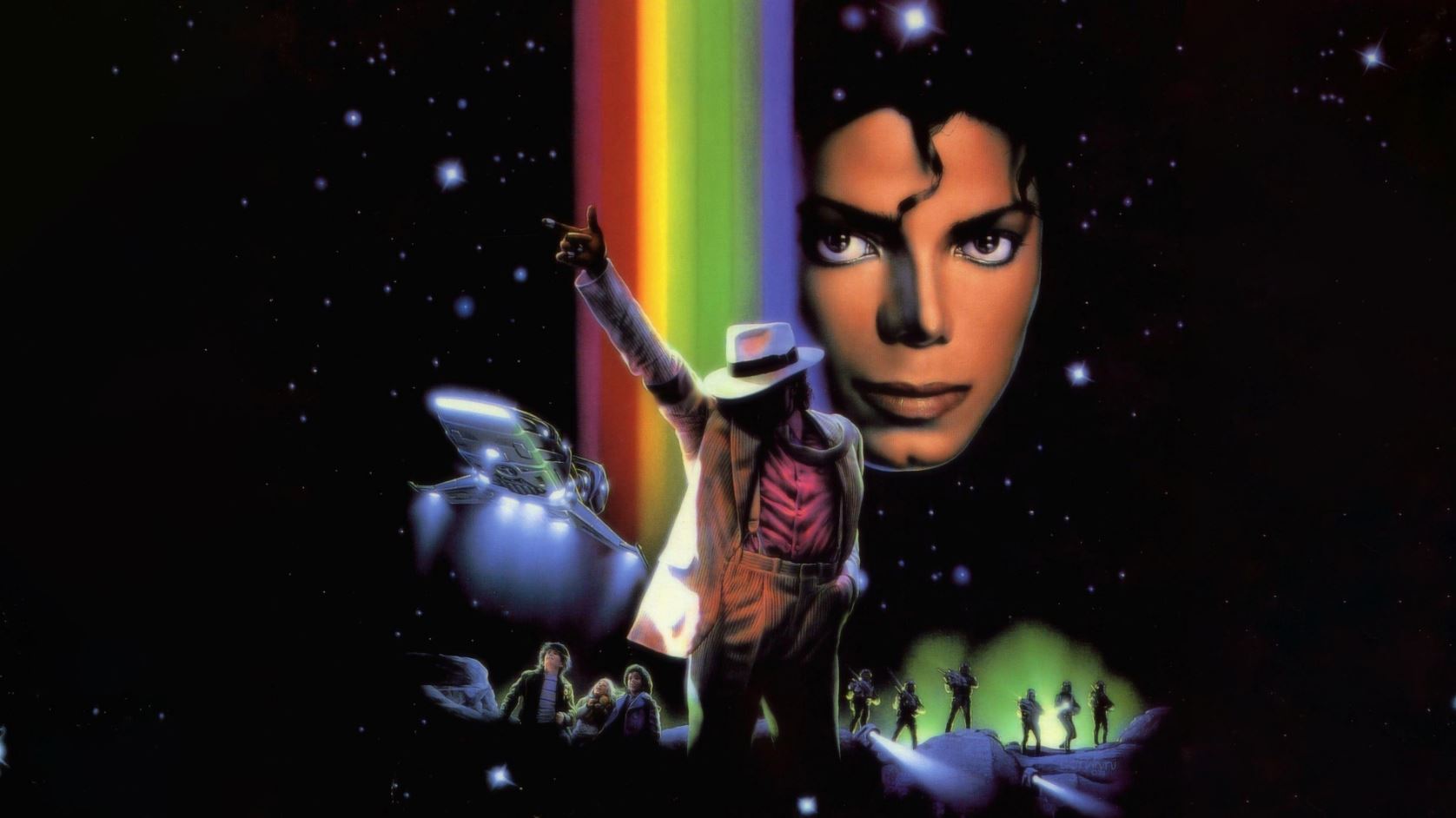
| Year | 1988 |
|---|---|
| Title | Moonwalker |
| Starring | Michael Jackson |
| Based on Album | Bad (1987) |
| Type | Experimental Anthology Film |
| Themes | Fandom, Innocence, Various Stages of Jackson’s Career |
| Features | Blend of Music, Narrative, Performance Art |
Film Segments Breakdown
This segment opens with a riveting live performance of “Man in the Mirror” during Jackson’s Bad World Tour. It features a powerful montage of global icons and scenes that epitomize change and humanitarianism, including figures like Martin Luther King Jr., Mother Teresa, and children from diverse cultures, underscoring the song’s message of self-improvement and global consciousness.
“Retrospective” offers a biographical look at Jackson’s rise from his early days with The Jackson 5 to his solo career pinnacle during the “Bad” World Tour. This segment is rich with Jackson’s musical history, showcasing a lineup of his hits such as “I Want You Back,” “Thriller,” and “Beat It,” each song punctuating different epochs of his artistic evolution.
A playful parody of the iconic “Bad” music video, “Badder” features children taking on the roles of Michael and his dancers. This lighthearted reimagining not only highlights Jackson’s influence on younger generations but also features cameos by family members like Jermaine La Jaune Jackson, Jr., and notable child actor Brandon Quintin Adams, bridging his real-life persona with his on-screen one.
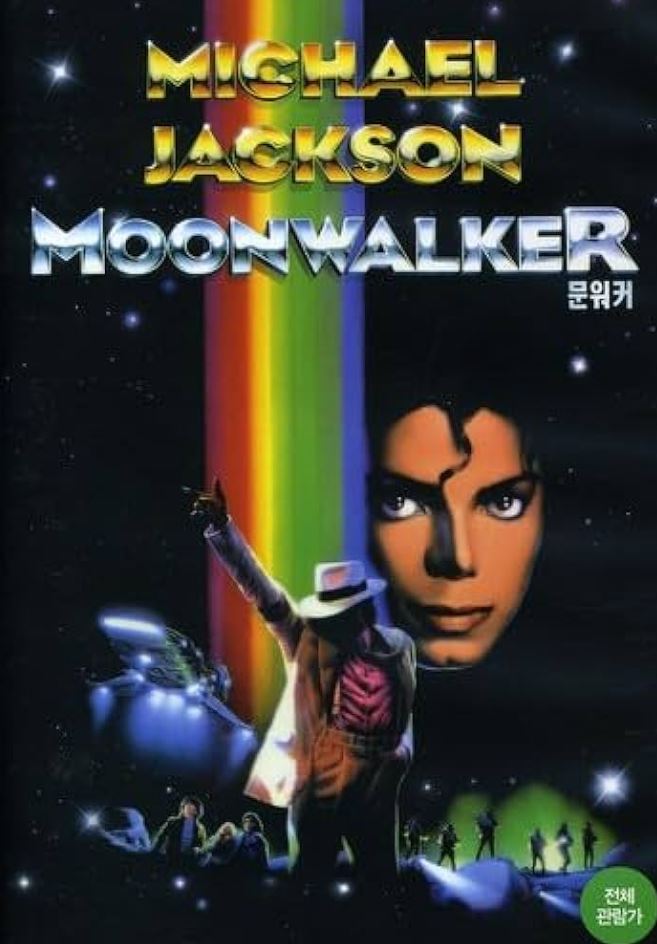
“Speed Demon” utilizes groundbreaking Claymation techniques to tell a whimsical tale of Jackson being chased by overzealous fans. This segment, full of vibrant animations and a comedic take on celebrity culture, cleverly uses visual effects to critique the very phenomenon of fame that defined much of Jackson’s life.
In “Leave Me Alone,” a surreal and animated critique of the relentless media scrutiny Jackson faced, the film turns into a metaphorical amusement park. This segment, which won a Grammy for Best Music Video, Short Form, cleverly uses vivid animations to depict the sensationalism surrounding Jackson’s personal life, with a poignant call for privacy and respect.
As the centerpiece of “Moonwalker,” “Smooth Criminal” is a narrative film within the anthology that features Jackson protecting three children from the nefarious Mr. Big, a drug dealer. This segment is renowned for its stylish 1930s aesthetics, smooth choreography, and its complex, highly stylized dance sequences, which have become iconic in the world of music videos.
Concluding the film, “Come Together” features Jackson performing the Beatles’ song amidst a scene that reunites him with the children from “Smooth Criminal,” symbolizing hope and resilience. This final piece ties back to the film’s overarching themes of camaraderie, innocence, and heroism, leaving the audience with a message of unity and collective joy.
Through “Moonwalker,” Michael Jackson not only showcases his unparalleled talent as a performer but also his depth as an artist capable of addressing complex themes such as fame, media, and personal struggles. Each segment of the film, while distinct, collaborates to form a comprehensive portrait of Jackson’s life and career, making “Moonwalker” a unique testament to his artistic legacy.
| Segment | Description | Main Features |
|---|---|---|
| Man in the Mirror | Live performance during the Bad World Tour, featuring a montage of global icons and scenes of change. | Martin Luther King Jr., Mother Teresa, Children from diverse cultures, Message of self-improvement and global consciousness. |
| Retrospective | Biographical segment on Jackson’s rise from The Jackson 5 to solo stardom. | Hits like “I Want You Back,” “Thriller,” “Beat It”; showcases musical history and evolution. |
| Badder | Parody of “Bad” with children playing the roles of Michael and his dancers. | Cameos by Jermaine La Jaune Jackson, Jr., Brandon Quintin Adams; highlights influence on younger generations. |
| Speed Demon | Claymation segment with Jackson being chased by fans. | Vibrant animations, comedic take on celebrity culture, visual effects. |
| Leave Me Alone | Animated critique of media scrutiny faced by Jackson, set in a metaphorical amusement park. | Grammy-winning for Best Music Video, vivid animations, call for privacy. |
| Smooth Criminal | Narrative film within the anthology featuring Jackson protecting children from a villain. | 1930s aesthetics, smooth choreography, iconic dance sequences. |
| Come Together | Performance of the Beatles’ song, tying themes of the film together. | Symbolizes hope and resilience, message of unity and collective joy. |
Release and Reception
“Moonwalker,” Michael Jackson’s ambitious anthology film, enjoyed a unique trajectory in its release and reception, differing markedly by region. Originally intended for a global theatrical release, the film premiered in theaters across Europe and South America in 1988. These regions, already buzzing with Jackson’s immense popularity from his “Bad” World Tour, embraced the film enthusiastically, turning it into a commercial success. However, the situation in the United States took a different path.
Warner Bros., the studio behind “Moonwalker,” initially planned a festive Christmas release in 1988 for American audiences. Yet, due to unspecified reasons which may have included marketing strategies or concerns about the film’s commercial viability in the U.S. theatrical market, these plans were shelved. Instead of a traditional cinema release, “Moonwalker” was directed straight to the home video market. Released on VHS by CMV Enterprises in January 1989, it coincided with the conclusion of the “Bad” World Tour. Despite—or perhaps because of—its direct-to-video release, “Moonwalker” became a monumental success on this platform.
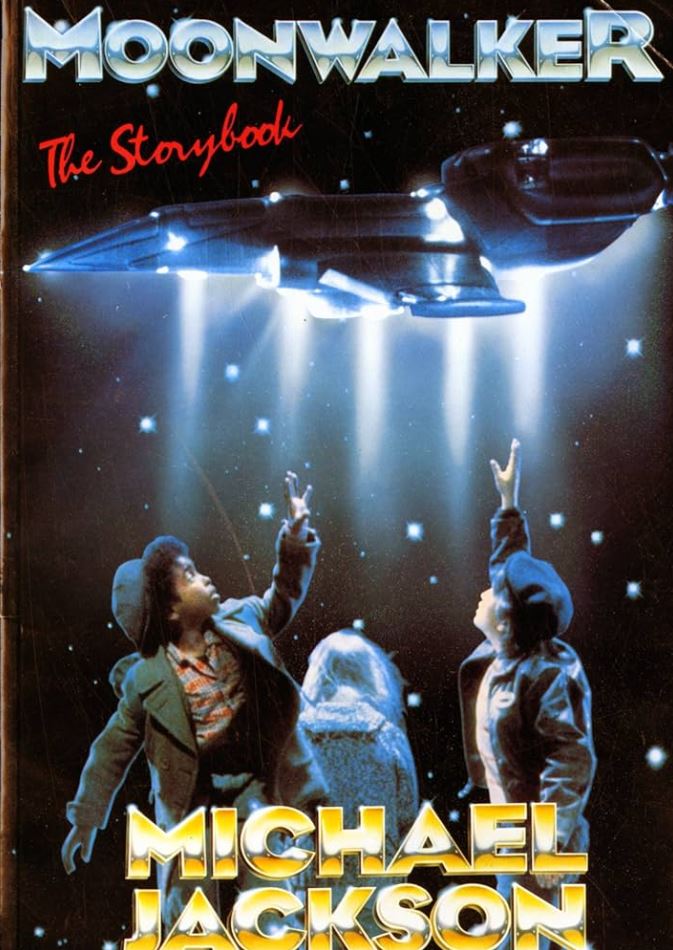
The home video release tapped into the voracious appetite of Jackson’s fanbase, rapidly climbing to the number one spot on Billboard’s Video Chart where it remained for 22 weeks. Additionally, it secured the top position on Billboard’s Top Video-Cassette sales chart for 14 consecutive weeks. These figures underscored the film’s widespread appeal and commercial success, proving that even without theatrical exhibition, Jackson’s star power could drive significant sales.
| Region | Release Type | Release Date | Reception |
|---|---|---|---|
| Europe and South America | Theatrical Release | 1988 | Commercial success, enhanced by popularity from the “Bad” World Tour |
| United States | Home Video Release | January 1989 | Monumental success, #1 on Billboard’s Video Chart for 22 weeks, #1 on Top Video-Cassette sales chart for 14 weeks |
Awards and Legacy
The artistic and commercial success of “Moonwalker” was further cemented by its reception in the awards circuit. Notably, the “Leave Me Alone” segment of the film won the Grammy Award for Best Music Video, Short Form in 1990. This recognition was particularly significant as it marked the only Grammy Award won from the “Bad” album. Additionally, the same segment fetched the Cannes Gold Lion Award for Best Special Effects, acknowledging the creative and technical prowess that went into its making.
Beyond these accolades, “Moonwalker” left an indelible mark on popular culture and the arts. The film not only showcased Jackson’s innovative approach to music and storytelling but also highlighted his ability to seamlessly integrate various media into a single, cohesive artistic vision. Through its unique format and the blend of live performances, music videos, and narrative segments, “Moonwalker” helped pioneer new ways of engaging with music and cinema. It pushed the boundaries of traditional music video formats, setting a higher bar for artistic ambition in the music industry.

The legacy of “Moonwalker” can also be seen in its influence on future generations of artists and filmmakers. It demonstrated the potential of music videos as a form of narrative storytelling and expanded the scope of what could be achieved in this medium. Moreover, Jackson’s dance performances, especially in the “Smooth Criminal” segment, have become iconic, often imitated and referenced in various forms of entertainment.
The film’s role in cementing Jackson’s status as a global pop icon cannot be overstated. “Moonwalker” encapsulated the height of his creative powers and left a lasting legacy on both his career and the broader landscape of global pop culture. It remains a pivotal piece in understanding the evolution of music videos and artist-centered visual albums that would follow in subsequent decades.
Through “Moonwalker,” Michael Jackson not only entertained the world but also shared a piece of his artistic soul, making it a timeless piece of pop culture history. Its success on various platforms and the awards it garnered are testament to its enduring appeal and the universal language of Jackson’s artistry.
| Award/Accolade | Year | Details |
|---|---|---|
| Grammy Award for Best Music Video, Short Form | 1990 | Won by “Leave Me Alone” segment; the only Grammy from the “Bad” album |
| Cannes Gold Lion Award for Best Special Effects | N/A | Awarded to “Leave Me Alone” segment for creative and technical prowess |
| Impact and Legacy | ||
| “Moonwalker” showcased innovative approaches to music and storytelling, integrating various media into a cohesive vision. It influenced future artists and filmmakers, setting new standards for music videos and narrative storytelling in cinema. | ||
| Cultural Influence | ||
| The film cemented Jackson’s status as a global pop icon and left a lasting legacy on pop culture. The “Smooth Criminal” segment’s dance performances became iconic, often imitated and referenced in entertainment. | ||
Critical Reception
The reception of “Moonwalker” among critics was as eclectic as the film itself. Michael Jackson’s ambitious project received a broad spectrum of responses, reflecting the diversity of its content—from music videos to narrative segments and innovative animation techniques. While fans and general audiences mostly embraced the film for its dazzling visual effects and the star power of Jackson, critics offered a mixed bag of reviews, scrutinizing its unconventional structure and thematic coherence.
Critics often pointed out that “Moonwalker” lacked a traditional narrative, which made it difficult to classify within conventional film genres. The anthology format, although innovative, was seen by some as disjointed, with the film feeling more like a series of loosely connected music videos rather than a cohesive story. Variety magazine described “Moonwalker” as seeming “unsure of what it was supposed to be.” Despite these critiques, the same reviews often praised the film’s music and groundbreaking visual effects. The “Smooth Criminal” segment, in particular, was universally acclaimed for its choreography and cinematic style, which many considered a high point of the film.
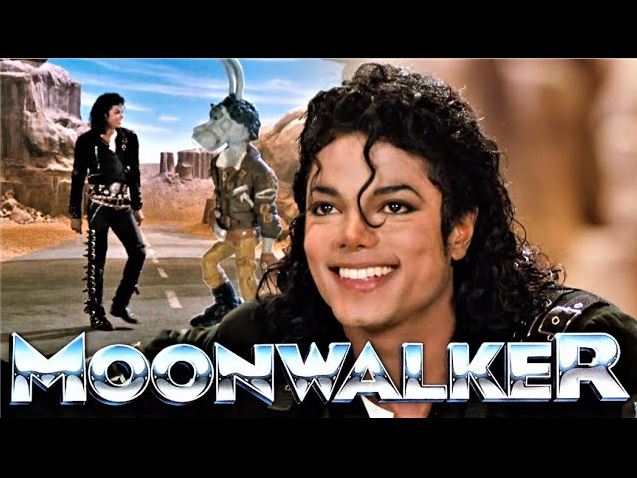
The film’s artistic aspects were generally well-received, with critics highlighting Jackson’s performance abilities and the visual spectacle of the movie. However, the thematic depth of segments like “Leave Me Alone” garnered appreciation for their introspective look at Jackson’s life under the microscope of incessant media scrutiny. This segment offered a rare glimpse into the personal sentiments of a superstar wrestling with fame, adding a layer of depth that critics acknowledged as both poignant and creatively presented.
| Aspect Evaluated | Critics’ Comments | General Consensus |
|---|---|---|
| Film Structure | Mixed reviews on the anthology format; seen as disjointed and lacking a cohesive narrative. | Varied; innovative by fans, fragmented by critics. |
| Visual Effects | Dazzling visual effects praised by both fans and critics. | Universally acclaimed. |
| “Smooth Criminal” Segment | Universally praised for choreography and cinematic style; considered a high point of the film. | Highly acclaimed. |
| Thematic Depth | Segments like “Leave Me Alone” appreciated for introspective look at Jackson’s fame and media scrutiny. | Positively received for poignant and creative presentation. |
| Overall Reception | Eclectic; critics offered a mixed bag of reviews, fans mostly embraced the film. | Mixed; more favorable among general audiences than critics. |
Home Media and Certifications
Upon its release, “Moonwalker” became a significant success in home media, particularly in markets where it was released directly to video. The film was initially released on VHS and later on LaserDisc, finding a receptive audience eager to experience Jackson’s artistic expressions in a format accessible outside the cinema. The VHS release topped the Billboard’s Video Chart for 22 weeks and remained at the number one position on Billboard’s Top Video-Cassette sales chart for 14 weeks, indicating its massive popularity.
The certifications of “Moonwalker” across various regions underscore its global impact. In the United States, the Recording Industry Association of America (RIAA) honored the film with a certification of 800,000 copies sold. Meanwhile, in the United Kingdom, it was certified 9x Platinum, reflecting substantial sales and enduring popularity. These certifications are indicative of the film’s significant reach and resonance with audiences around the world.
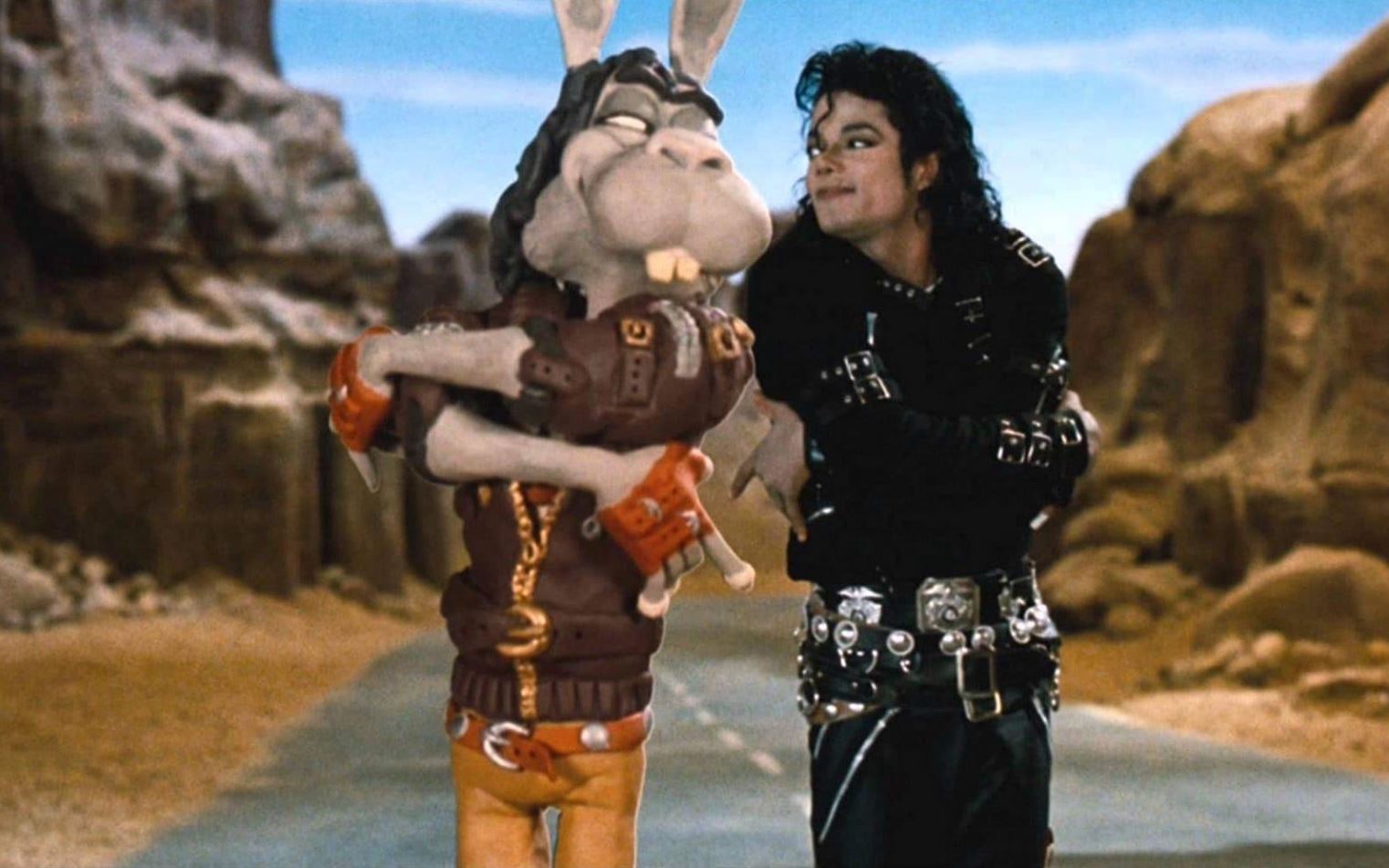
In terms of modern availability, “Moonwalker” has navigated the transition to digital and streaming platforms with a degree of exclusivity. The film was released on a region-free Blu-ray in the United Kingdom in June 2010 by Warner Bros., featuring a new remastered transfer and a DTS-HD Master Audio soundtrack. This release was notable for being presented in its original theatrical 16:9 aspect ratio, different from the 4:3 ratio used in earlier home media formats. However, scenes involving violence and drug use were censored, reflecting ongoing sensitivity to content presentation.
Currently, “Moonwalker” is available for purchase and streaming exclusively on Amazon Prime Video, where it includes the 2010 Blu-Ray disc version. This modern platform ensures that new audiences can experience the film, although its availability is still somewhat limited compared to other films from the same era. This selective distribution has helped maintain a certain mystique around “Moonwalker,” keeping it as a sought-after piece of Michael Jackson’s artistic legacy.
The evolution of “Moonwalker” from a theatrical release to a home media sensation, and now a digital treasure, reflects its unique position in the annals of music film history. Despite the mixed critical responses, the film has secured a lasting legacy, celebrated for its artistic ambition and the iconic status of its creator.
| Format | Release Details | Impact and Reception |
|---|---|---|
| Home Media (VHS, LaserDisc) | Initial release directly to video. Topped Billboard’s Video Chart for 22 weeks and Top Video-Cassette sales for 14 weeks. | Massive popularity and success in home media markets. |
| Certifications | 800,000 copies in the US (RIAA), 9x Platinum in the UK. | Significant global impact and enduring popularity. |
| Digital and Streaming | Released on region-free Blu-ray in the UK in 2010; available for streaming on Amazon Prime Video. | Modern availability with high quality remastering; selective distribution maintains mystique. |
Moonwalker in Other Media Video
“Moonwalker” extended its reach beyond the silver screen into various forms of media, reflecting the expansive influence of Michael Jackson’s creative vision. The adaptations into video games, comic books, and toys not only diversified the ways fans could engage with the film’s content but also underscored the enduring appeal of Jackson’s artistry.
The most notable adaptation of “Moonwalker” was into the realm of video games. Developed in collaboration with Sega, the “Moonwalker” video game was released on multiple platforms, including arcade machines and home consoles like the Sega Genesis/Mega Drive. The game featured Jackson as the protagonist, using music and dance moves as magical elements to battle enemies and rescue kidnapped children. This innovative approach combined elements of rhythm and action gameplay, making it a unique offering in the video game market at the time.
The reception of the “Moonwalker” video game was generally positive, with fans appreciating the chance to step into the shoes of Michael Jackson. The game’s music, which included 16-bit versions of Jackson’s hits, was particularly praised. It became a cultural phenomenon in its own right, allowing players to experience the cinematic world of “Moonwalker” interactively.
In 1989, “Moonwalker” was also adapted into a comic book by Blackthorne Publishing. This adaptation was part of their 3-D series and sought to capture the visual and thematic essence of the film in a static medium. However, the comic book did not achieve significant commercial success and was a contributing factor to the financial difficulties faced by Blackthorne, which eventually ceased operations in 1990. Despite its lack of commercial success, the comic remains a collector’s item for avid fans of Michael Jackson and comic book enthusiasts.
The legacy of “Moonwalker” also expanded into the toy industry. In 2014, Bandai released an S.H. Figuarts action figure of Michael Jackson in his iconic “Smooth Criminal” outfit. The figure was noted for its attention to detail and articulation, allowing fans to recreate famous dance poses from the film. This release demonstrated the ongoing market demand for merchandise related to Michael Jackson’s works, long after their initial release.
| Media Type | Details | Impact and Reception |
|---|---|---|
| Video Game | Developed with Sega for arcade and Sega Genesis/Mega Drive; features Jackson using music and dance in gameplay. | Positive reception; became a cultural phenomenon, praised for music and innovative gameplay. |
| Comic Book | Published in 1989 by Blackthorne Publishing in 3-D format; aimed to capture film’s visual and thematic essence. | Limited commercial success; remains a collector’s item despite contributing to publisher’s financial issues. |
| Toys | 2014 release of an S.H. Figuarts action figure by Bandai, depicting Jackson in “Smooth Criminal” outfit. | Noted for detailed articulation; reflects ongoing demand for Jackson-related merchandise. |
Reflecting on the artistic and cultural significance of “Moonwalker,” it is clear that the film was more than just an entertainment product; it was an extension of Michael Jackson’s creative genius. The film and its various adaptations played a crucial role in shaping the multimedia approach to music and storytelling that would become more prevalent in the following decades. “Moonwalker” showcased the potential of combining music, film, and interactive media, paving the way for future artists to explore these intersections.
The film remains a testament to Jackson’s foresight and innovative spirit. It explored themes of fame, privacy, and innocence that were not only relevant to Jackson’s personal life but also resonant with a global audience. The diverse media adaptations further enriched the “Moonwalker” experience, allowing it to reach a wider audience and influence a variety of entertainment mediums.
In conclusion, “Moonwalker” holds a unique place in Michael Jackson’s career as well as in the broader context of pop culture. It exemplifies how an artist can transcend traditional boundaries of expression, combining film, music, and dance into a multifaceted artistic vision. Its impact on multimedia storytelling, particularly in how music narratives are presented and experienced, continues to be felt today, proving the enduring legacy of Michael Jackson’s artistry. Through “Moonwalker,” Michael Jackson did not just leave a mark on the entertainment industry; he shaped its future, inspiring countless artists and creators to dream bigger and push the limits of their creative ambitions.

